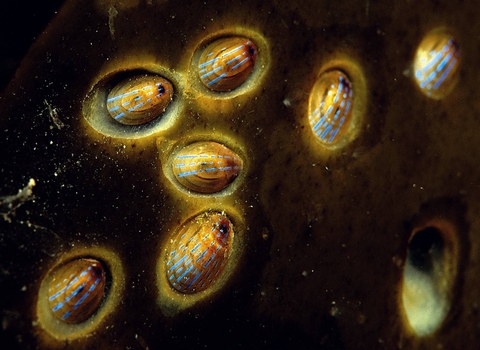
Blue-rayed limpets ©Paul Naylor www.marinephoto.co.uk
Blue-rayed limpet
The kingfisher blue stripes of a blue-rayed limpet are a magical sight whilst rockpooling - you'll need to go on a very low tide though as their favourite home is on kelp.

Blue-rayed limpets ©Paul Naylor www.marinephoto.co.uk